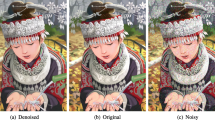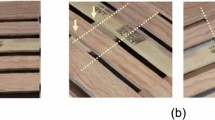Abstract
In recent years, computer vision models have shown a significant improvement in performance on various image analysis tasks. However, these models are not robust against noisy images. There are various causes of noise including noise coming from image capturing conditions such as lighting, weather, and the noise induced by physical measurement devices such as the camera or sensor. To address the problem of noise in images, various works have been proposed. Most of these works focus on computer vision models that run on high-compute devices such as mainframes. However, with recent advances in the deployment of AI technology in mobile and edge devices, there is an increased need for models which work equally well on such devices. In this work, a novel image-denoising algorithm based on the Least Square Generative Adversarial Network (LSGAN) is proposed. It also has the ability to work in settings with lower computing access such as edge devices. The generator part of the LSGAN is a UNet-based architecture which is used to capture detailed low-level features while preserving image information. For the discriminator part of LSGAN, a fully connected network is used, which offers faster convergence, and more stability when training using the composite loss function formed with least-squares loss, visual perception loss and the mean square loss. The proposed model has been evaluated on publicly available denoising datasets including PolyU, CBSD68, DIV2K, and SIDD, under low-compute conditions. The obtained results demonstrate a considerable improvement when compared to various widely deployed works on low-computing devices.























Similar content being viewed by others
Data Availability Statement
The codes and network models generated during the current study are available from the corresponding author upon reasonable request.
References
Agustsson, E., Timofte, R.: Ntire 2017 challenge on single image super-resolution: dataset and study. In: The IEEE Conference on Computer Vision and Pattern Recognition (CVPR) Workshops (2017)
Aharon, M., Elad, M., Bruckstein, A.: K-svd: an algorithm for designing overcomplete dictionaries for sparse representation. IEEE Trans. Signal Process. 54(11), 4311–4322 (2006). https://doi.org/10.1109/TSP.2006.881199
Buades, A., Coll, B., Morel, J.M.: A review of image denoising algorithms, with a new one. Multiscale Model. Simulat. 4(2), 490–530 (2005). https://doi.org/10.1137/040616024
Camuto, A., Willetts, M., Şimşekli, U., et al.: Explicit regularisation in gaussian noise injections. In: Proceedings of the 34th International Conference on Neural Information Processing Systems. Curran Associates Inc., Red Hook, NY, USA, NIPS’20, p 16603-16614 (2020)
Chen, Y., Pock, T.: Trainable nonlinear reaction diffusion: a flexible framework for fast and effective image restoration. IEEE Trans. Pattern Anal. Mach. Intell. 39(6), 1256–1272 (2017). https://doi.org/10.1109/TPAMI.2016.2596743
Chen, H., Zhang, Y., Kalra, M.K., et al.: Low-dose ct with a residual encoder-decoder convolutional neural network. IEEE Trans. Med. Imaging 36(12), 2524–2535 (2017). https://doi.org/10.1109/TMI.2017.2715284
Chen, J., Chen, J., Chao, H., et al.: Image blind denoising with generative adversarial network based noise modeling. In: 2018 IEEE/CVF Conference on Computer Vision and Pattern Recognition, pp 3155–3164 (2018). https://doi.org/10.1109/CVPR.2018.00333
Chen, S., Shi, D., Sadiq, M., et al.: Image denoising via generative adversarial networks with detail loss. In: ICISS 2019: Proceedings of the 2019 2nd International Conference on Information Science and Systems, pp 261–265 (2019). https://doi.org/10.1145/3322645.3322656
Chen, Y., Xia R., K. Z.: Mfmam: Image inpainting via multi-scale feature module with attention module. Comput. Vis. Image Understand. 238, 103883 (2024). https://doi.org/10.1016/j.cviu.2023.103883
Dabov, K., Foi, A., Katkovnik, V., et al.: Image denoising by sparse 3-d transform-domain collaborative filtering. IEEE Trans. Image Process. 16(8), 2080–2095 (2007). https://doi.org/10.1109/TIP.2007.901238
Divakar, N., Babu, R.V.: Image denoising via cnns: an adversarial approach. In: 2017 IEEE Conference on Computer Vision and Pattern Recognition Workshops (CVPRW), pp 1076–1083 (2017). https://doi.org/10.1109/CVPRW.2017.145
Dong, W., Shi, G., Li, X.: Nonlocal image restoration with bilateral variance estimation: a low-rank approach. IEEE Trans. Image Process. 22(2), 700–711 (2013). https://doi.org/10.1109/TIP.2012.2221729
Dong, W., Zhang, L., Shi, G., et al.: Nonlocally centralized sparse representation for image restoration. IEEE Trans. Image Process. 22(4), 1620–1630 (2013). https://doi.org/10.1109/TIP.2012.2235847
Dong, Z., Liu, G., Ni, G., et al.: Optical coherence tomography image denoising using a generative adversarial network with speckle modulation. J. Biophoton. 13(4), e201960135 (2020). https://doi.org/10.1002/jbio.201960135
Elad, M., Kawar, B., Vaksman, G.: Image denoising: The deep learning revolution and beyond—a survey paper. 2301.03362 (2023)
Hala, N., Mohamed, B.H., Javier, N., et al.: Doc-attentive-gan: attentive gan for historical document denoising. Multimed. Tools Appl. (2023). https://doi.org/10.1007/s11042-023-17476-2
Zhang, K., Zuo, W., Chen, Y., et al.: Beyond a gaussian denoiser: residual learning of deep cnn for image denoising. IEEE Trans. Image Process. 26(7), 3142–3155 (2017). https://doi.org/10.1109/TIP.2017.2662206
Han, Y.J., Yu, H.J.: Nm-flowgan: Modeling srgb noise with a hybrid approach based on normalizing flows and generative adversarial networks. 2312.10112 (2023)
Huang, Z., Zhang, J., Zhang, Y., et al.: Du-gan: generative adversarial networks with dual-domain u-net-based discriminators for low-dose ct denoising. IEEE Trans. Instrum. Measure. 71, 1–12 (2022). https://doi.org/10.1109/TIM.2021.3128703
Isola, P., Zhu, J.Y., Zhou, T., et al.: Image-to-image translation with conditional adversarial networks. In: 2017 IEEE Conference on Computer Vision and Pattern Recognition (CVPR), pp 5967–5976 (2017). https://doi.org/10.1109/CVPR.2017.632
Jiang, D., Dou, W., Vosters, L., et al.: Denoising of 3d magnetic resonance images with multi-channel residual learning of convolutional neural network. Jpn. J. Radiol. 36, 566–574 (2017). https://doi.org/10.1007/s11604-018-0758-8
Kang, X., Mengting, L., Hu, C., et al.: Speckle denoising of optical coherence tomography image using residual encoder-decoder cyclegan. Signal Image Video Process. 17, 1521–1533 (2023). https://doi.org/10.1007/s11760-022-02361-6
Koprowski, R.: Image pre-processing. Chap 5, 21–38 (2017). (Springer International Publishing, Cham). https://doi.org/10.1007/97833195049023
Kunsoth, R., Biswas, M.: Modified decision based median filter for impulse noise removal. In: 2016 International Conference on Wireless Communications, Signal Processing and Networking (WiSPNET), pp 1316–1319 (2016). https://doi.org/10.1109/WiSPNET.2016.7566350
Li, H., Wu, X.J.: Densefuse: a fusion approach to infrared and visible images. IEEE Trans. Image Process. 28(5), 2614–2623 (2019). https://doi.org/10.1109/TIP.2018.2887342
Liu, F., Liu, X.: 2d gans meet unsupervised single-view 3d reconstruction. In: Avidan, S., Brostow, G., Cissé, M., et al. (eds.) Computer Vision - ECCV 2022, pp. 497–514. Springer Nature, Cham (2022)
Mairal, J., Bach, F., Ponce, J., et al.: Non-local sparse models for image restoration. In: 2009 IEEE 12th International Conference on Computer Vision, pp 2272–2279 (2009). https://doi.org/10.1109/ICCV.2009.5459452
Mao, X., Li, Q., Xie, H., et al.: Least squares generative adversarial networks. In: 2017 IEEE International Conference on Computer Vision (ICCV), pp 2813–2821 (2017). https://doi.org/10.1109/ICCV.2017.304
Reddy, S.N., S, D.P.: Color, scale, and rotation independent multiple license plates detection in videos and still images. Math. Prob. Eng., 1–14 (2016). https://doi.org/10.1155/2016/9306282
Reed, S., Akata, Z., Yan, X., et al.: Generative adversarial text to image synthesis (2016). arXiv:1605.05396
Ronneberger, O., Fischer, P., Brox, T.: U-net: Convolutional networks for biomedical image segmentation (2015). arXiv:1505.04597
Songtao, Wu., Shenghua Zhong, Y.L.: Deep residual learning for image steganalysis. Multimed. Tools Appl. 77, 10437–10453 (2017). https://doi.org/10.1007/s11042-017-4440-4
Sungmin, C., Taesup, M.: Fully convolutional pixel adaptive image denoiser (2018). CoRR. arXiv:1807.07569
Wang, D., Jin, W., Wu, Y., et al.: Improving global adversarial robustness generalization with adversarially trained gan (2021)
Wang, Y., Chang, D., Zhao, Y.: A new blind image denoising method based on asymmetric generative adversarial network. IET Image Processing 15(6), 1260–1272 (2021). https://doi.org/10.1049/ipr2.12102
Wang, Z., Liu, J., Li, G., et al.: Blind2unblind: Self-supervised image denoising with visible blind spots. In: Proceedings of the IEEE/CVF Conference on Computer Vision and Pattern Recognition (CVPR), pp 2027–2036 (2022)
Wang, J., Di, S., Chen, L., et al.: Noise2info: noisy image to information of noise for self-supervised image denoising. In: Proceedings of the IEEE/CVF International Conference on Computer Vision (ICCV), pp 16034–16043 (2023)
Yi, X., Xu, H., Zhang, H., et al.: Diff-retinex: rethinking low-light image enhancement with a generative diffusion model. In: Proceedings of the IEEE/CVF International Conference on Computer Vision (ICCV), pp 12302–12311 (2023)
Yin, W., Zhang, J., Wang, O., et al.: Learning to recover 3d scene shape from a single image. 2012.09365 (2020)
You, C., Li, G., Zhang, Y., et al.: Ct super-resolution gan constrained by the identical, residual, and cycle learning ensemble (gan-circle). IEEE Trans. Med. Imaging 39(1), 188–203 (2020). https://doi.org/10.1109/TMI.2019.2922960
Zhang, K., Zuo, W., Zhang, L.: Ffdnet: toward a fast and flexible solution for CNN-based image denoising. IEEE Trans. Image Process. 27(9), 4608–4622 (2018). https://doi.org/10.1109/tip.2018.2839891
Zhang, Q., Xiao, J., Tian, C., et al.: A robust deformed convolutional neural network (cnn) for image denoising. CAAI Trans. Intell. Technol. 8, 331–342 (2023)
Zhang, J., He, Y., Chen, W., et al.: Corrformer: context-aware tracking with cross-correlation and transformer. Comput. Electrical Eng. 114, 109075 (2024). https://doi.org/10.1016/j.compeleceng.2024.109075. https://www.sciencedirect.com/science/article/pii/S004579062400003X
Zhang, J., Lv, Y., Tao, J., et al.: A robust real-time anchor-free traffic sign detector with one-level feature. IEEE Trans. Emerg. Top. Comput. Intell. pp 1–15 (2024). https://doi.org/10.1109/TETCI.2024.3349464
Zhang, J., Huang, H., Jin, X., et al.: Siamese visual tracking based on criss-cross attention and improved head network. Multimed. Tools Appl. 83(1589–1615), 1 (2024). https://doi.org/10.1007/s11042-023-15429-3
Zhao, S., Lin, S., Cheng, X., et al.: Dual-gan complementary learning for real-world image denoising. IEEE Sens. J. 24(1), 355–366 (2024). https://doi.org/10.1109/JSEN.2023.3312389
Zhu, J.Y., Park, T., Isola, P., et al.: Unpaired image-to-image translation using cycle-consistent adversarial networks. In: 2017 IEEE International Conference on Computer Vision (ICCV), pp 2242–2251 (2017). https://doi.org/10.1109/ICCV.2017.244
Author information
Authors and Affiliations
Corresponding author
Ethics declarations
Conflict of interest
The authors declare that they have no conflict of interest to disclose. All the authors have participated in writing this paper and the work is original and is not published elsewhere. This manuscript has not been submitted to, nor is it under review at, another journal or other publishing venue.
Additional information
Publisher's Note
Springer Nature remains neutral with regard to jurisdictional claims in published maps and institutional affiliations.
Rights and permissions
Springer Nature or its licensor (e.g. a society or other partner) holds exclusive rights to this article under a publishing agreement with the author(s) or other rightsholder(s); author self-archiving of the accepted manuscript version of this article is solely governed by the terms of such publishing agreement and applicable law.
About this article
Cite this article
Mohammed, S.W., Murugan, B. A novel image denoising algorithm based on least square generative adversarial network. J Real-Time Image Proc 21, 79 (2024). https://doi.org/10.1007/s11554-024-01447-3
Received:
Accepted:
Published:
DOI: https://doi.org/10.1007/s11554-024-01447-3




